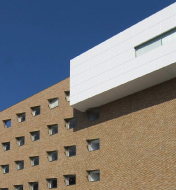Nagoya University Hospital and the city of Tsushima in western Aichi Prefecture have launched a new project beginning in early January 2024 to improve the targeting of assistance and medical care to people in the city. The aim of the project is to understand the sources of risk faced by people living in Tsushima, such as falling at home, so that medical specialists can provide preventive care. In Tsushima, fractures are the most common cause of injury among older adults. However, treating such injuries increases the demand for care and burdens the finances of the local health system. Director of Nagoya University Hospital Yasuhiro Kodera and Mayor of Tsushima Kazuaki Hibi signed an agreement on December 20,2023. Tsushima is about 45 minutes by train from Nagoya Station.
As Japanese society ages, the social welfare system faces a significant challenge in providing appropriate and targeted care to older adults. Aichi Prefecture and Nagoya University Hospital are already collaborating to collect data from medical institutions, local governments, and patients to understand the current use of medical resources. To improve health outcomes for patients, they are trying to improve the targeting and timing of treatment. The data show the high cost of treating older people whose conditions worsen.
 Yasuhiro Kodera, director of Nagoya University Hospital, and Kazuaki Hibi, mayor of Tsushima, with the agreement
Yasuhiro Kodera, director of Nagoya University Hospital, and Kazuaki Hibi, mayor of Tsushima, with the agreement
Through a combination of data analysis and risk assessment of patient living situations, care managers and hospitals can work together to identify patients who may require additional treatment and prevent their condition from worsening through early intervention. The data also helps them to target the specific needs of patients. These efforts should help improve the quality of life of Tsushima residents and reduce the financial burden on the health care system. In the future, this should allow for more efficient allocation of resources directed to improving the well-being of all residents.






